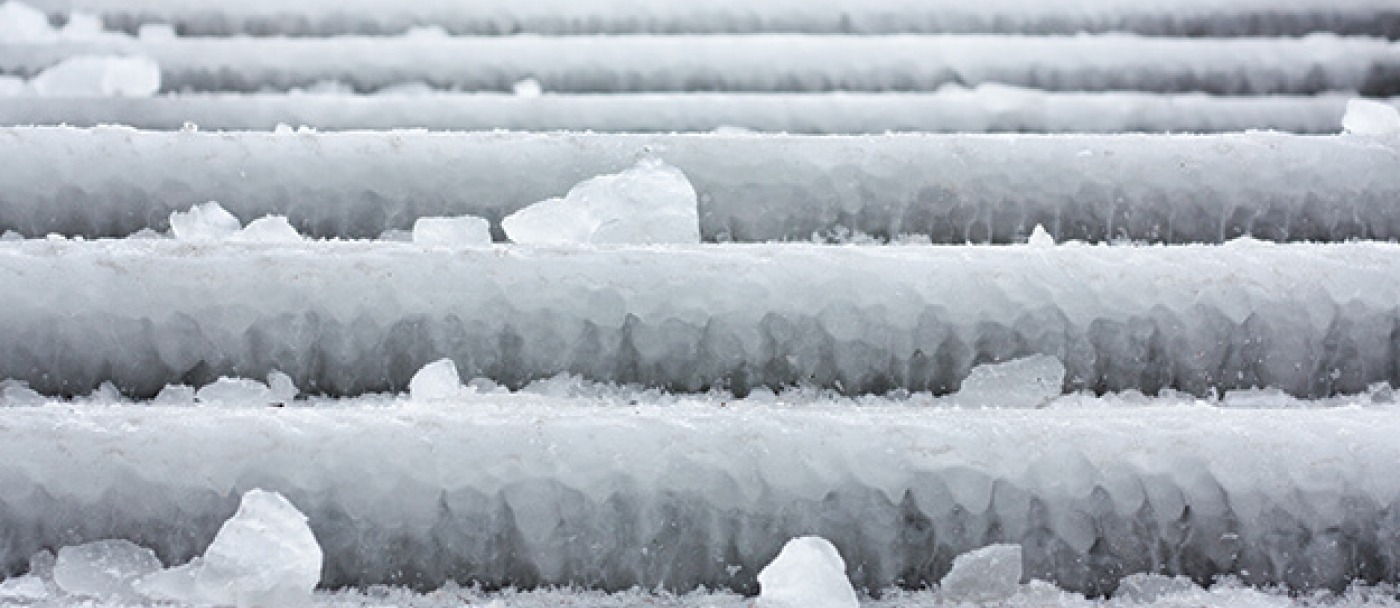How do ice melters affect concrete?

Most concrete damage is a result of the natural effects of freeze-thaw cycles, not a chemical attack by an ice melter. Moisture seeps into the surface pores and cracks in the concrete,and as it changes to ice, expands and puts pressure on surrounding surfaces.
Stress on weaker areas in the concrete may result in cracking or surface deterioration. Using an ice melter increases the number of freeze-thaw cycles, and the potential for damage to concrete. However, the hazards and risk of injury associated with slippery surfaces must be weighed against this.
Properly air-entrained concrete designed for cold weather climates (as recommended by the Portland Cement Association) has a network of tiny air pockets that allow it to accommodate freeze-thaw cycles. Poor quality surfaces may not withstand the stress associated with these cycles.
Ice melter is not recommended on the following surfaces; concrete that is less than 1 year old, masonry (stone or brick), precast concrete (steps or paving stones), stone or concrete surfaces that are chipped, cracked, spalled or have exposed aggregate.
Here are some recommendations for reducing the risk of damage to concrete:
- Apply ice melter at recommended rates
- Use a push type or hand held ice melter spreader An ice melter with an environmentally inert dye marker can make it easier to prevent overapplication
- Use an ice melter with extended refreezing protection
- Remove slush and water before refreezing occurs
- Avoid using ice melters on non air-entrained concrete or other vulnerable surfaces
- Apply a commercial strength sealer when dry
- If you are unsure of the quality of your concrete or the suitability of using an ice melter on your surface; use sand for traction only, to reduce the risk of slips and falls.
Freeze-Thaw Cycle
- Freeze: Layer of ice on concrete surface
- Thaw: Thawed ice (water) fills surface pores and cracks
- Refreeze: Expansion caused by refreezing can result in additional damage





